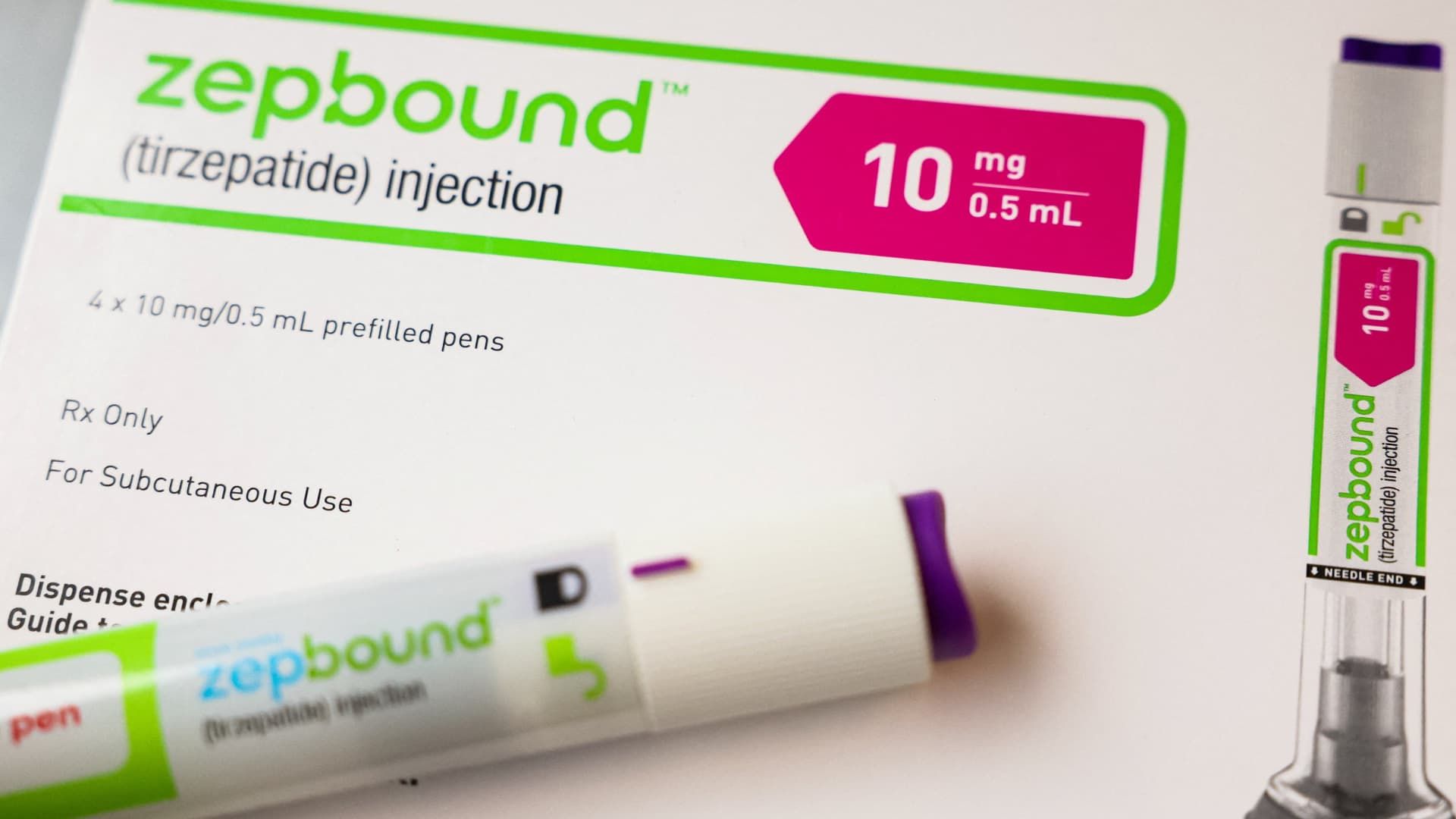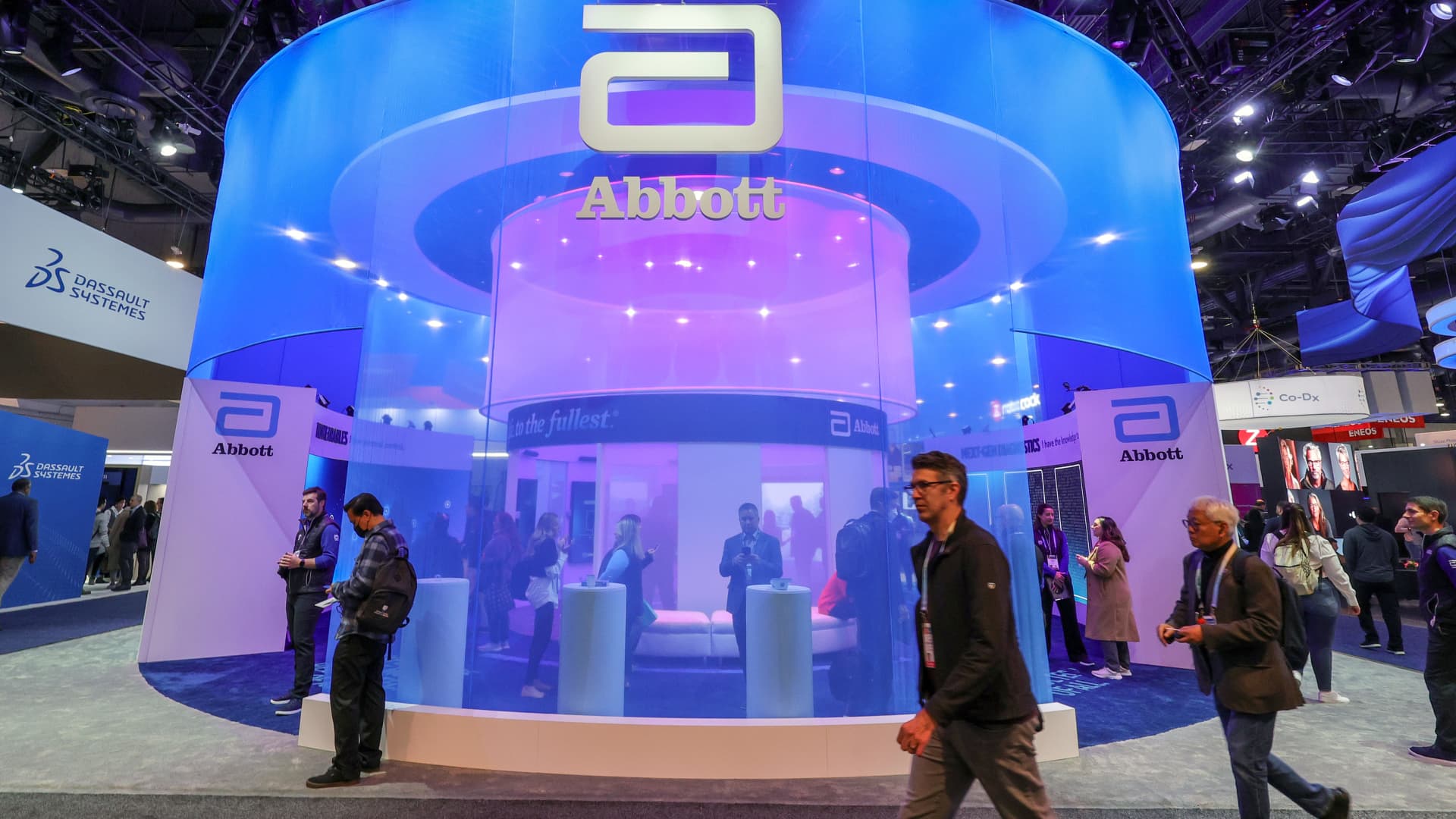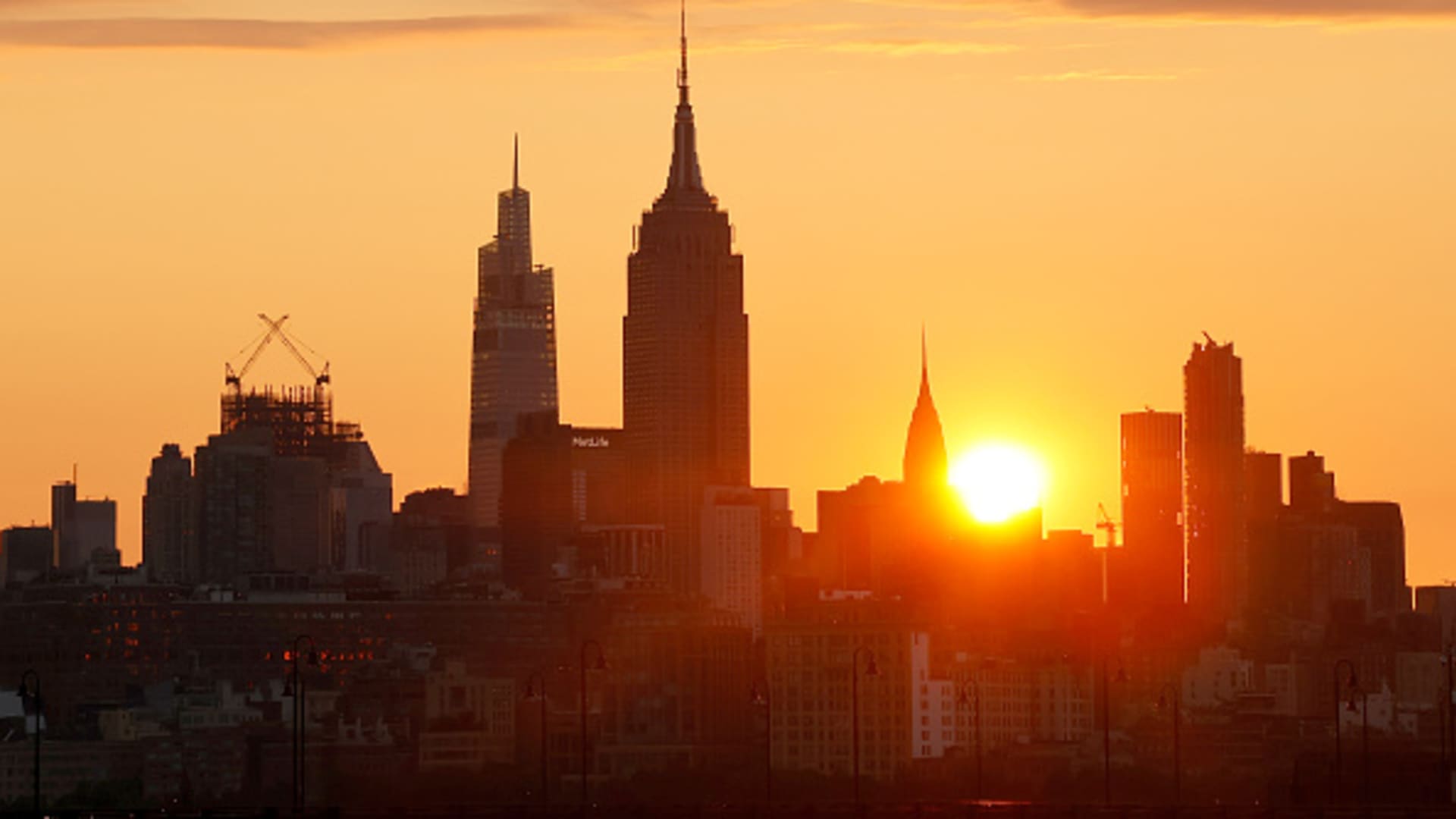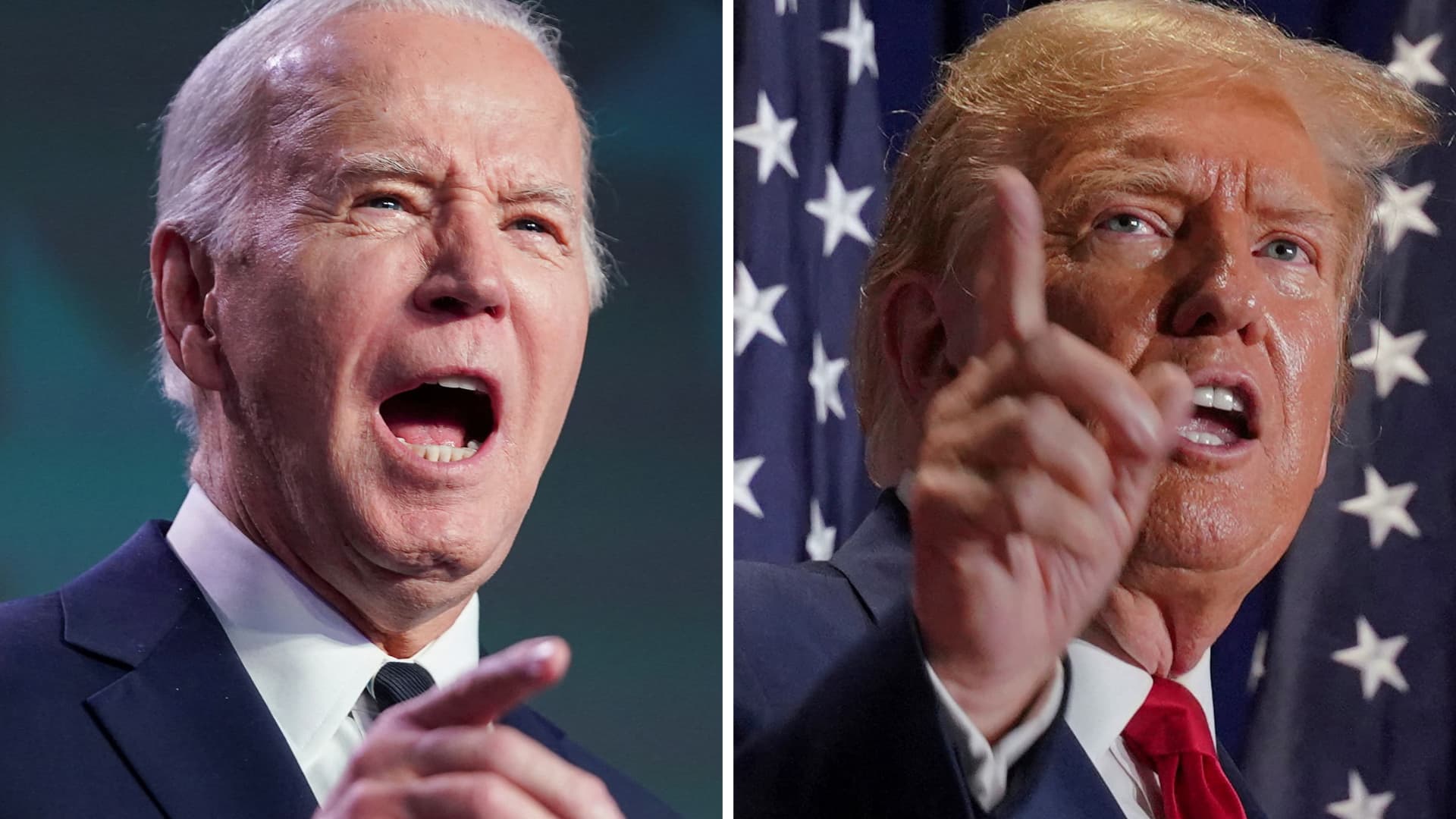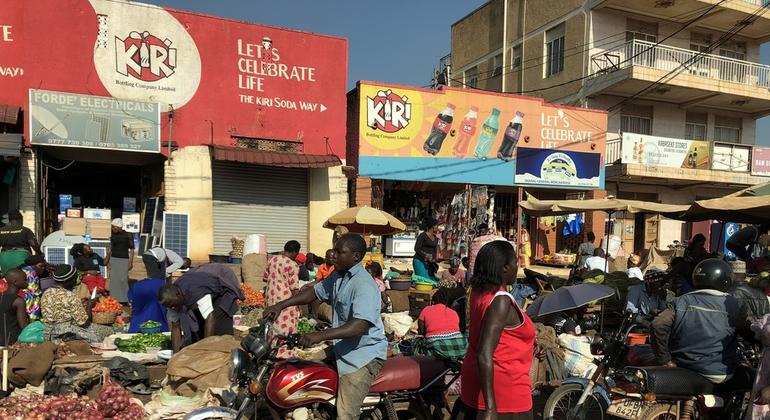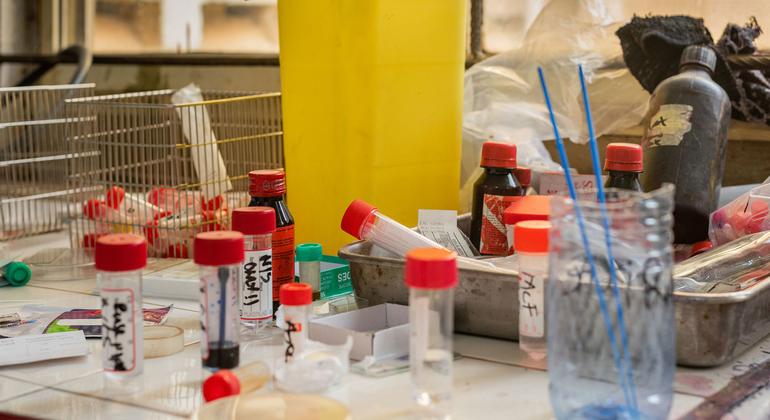Eli Lilly's improved guidance stole the show on Tuesday, offsetting mixed first-quarter results and sending shares up nearly 6%. The numbers leave little doubt that Eli Lilly's long-term success story remains intact, as demand for its new diabetes and obesity drugs, Mounjaro and Zepbound, outstrips supply. Revenue in the three months ended March 31 rose 26% year over year to $8.77 billion, missing the $8.92 billion expected by analysts, according to estimates compiled by LSEG. Adjusted earnings per share in the first quarter were $2.58, beating the consensus estimate of $2.46, LSEG data showed. Eli Lilly Why we own it: Eli Lilly's top drugs should enable growth above the industry average for many years. The portfolio is based on its GLP-1 franchise, which currently consists of Mounjaro for type 2 diabetes and Zepbound for obesity. This fast-growing class of drugs has the potential to treat other conditions, such as sleep apnea, and reduce the risk of stroke. Lilly's experimental Alzheimer's treatments increase the stock's long-term appeal. Competitors: Novo Nordisk, Biogen, Eisai, Merck and Pfizer Portfolio weight: 2.7% Most recent purchase: February 7, 2023 Started: October 8, 2021 Conclusion Eli Lilly checked all the boxes that are important for investors to long term. including the Club, so it is not surprising that the action is experiencing one of its best days of the year. At its morning highs, Eli Lilly shares traded above its all-time closing high of $792.28 set on March 4. Demand for Mounjaro and Zepbound, which share an active ingredient known as tirzepatide, is off the charts. But, just as important, the administration is skillfully managing the complex and expensive process of increasing production capacity for injectable drugs to alleviate supply constraints. That has to happen for Lilly to meet Wall Street's lofty growth expectations. “It's the highest quality problem,” Jim Cramer said Tuesday, referring to demand for Mounjaro and Zepbound far outstripping availability. LLY .SPX 5Y mountain Eli Lilly's stock performance over the past five years compared to the S&P 500. Eli Lilly expects significant increases in Mounjaro and Zepbound shipping volumes in the second half of 2024. That allowed management to raise its annual revenue and earnings guidance less than three months after it was initially given, quieting the noise around first-quarter results. “I like everything I heard” from Eli Lilly on Tuesday, added Jim, who has long said tirzepatide could become the best-selling drug of all time. In fact, nothing in Tuesday's report reduces the likelihood of that happening in the coming years. We maintain our 2 rating and $850 per share price target on the stock. Quarterly Commentary In its first full quarter in the US market, Zepbound's sales exceeded Wall Street expectations, totaling $517.4 million in the three months ended in March, compared with estimates of $373.3 million, according to FactSet. Zepbound's insurance coverage, a crucial piece to its long-term financial success, is improving “rapidly,” Chief Financial Officer Anat Ashkenazi said on the post-earnings conference call. As of April 1, Zepbound had about 67% access in the commercial insurance market, up from about 33% on February 1, according to the company. Zepbound was approved by US regulators in early November and hit pharmacies a few weeks later. In the fourth quarter, Zepbound's revenue was approximately $176 million. Mounjaro's first-quarter sales more than tripled to $1.81 billion, but missed Wall Street estimates. This isn't exactly a surprise given supply constraints. Lilly's other GLP-1 for type 2 diabetes on the market, Trulicity, saw its sales fall 26% to $1.46 billion. It also missed revenue estimates. Like Zepbound and Mounjaro, Trulicity is facing shortages. Historically, some patients also switch to Mounjaro from Trulicity. Most doses of Zepbound and Mounjaro are expected to have limited availability through the end of the second quarter in June, according to a Food and Drug Administration database. It's a similar schedule for most doses of Trulicity, which was first approved nearly a decade ago. All three medications are injectable once a week, and patients increase the dosage over the course of treatment. “Unprecedented demand” for so-called incretin drugs from Eli Lilly – a group consisting of Zepbound, Mounjaro and Trulicity – is contributing to the shortage, Ashkenazi said on the call. “In the short and medium term, we expect sales growth to depend primarily on the quantities we can produce and ship,” he said. The quantities continue to increase. Eli Lilly's incretin dose production in the second half of 2024 is still on track to be about 1.5 times higher than the same period last year, Ashkenazi said. The company has six production facilities under construction or being expanded, Ashkenazi said. Last week, he announced an agreement to acquire a seventh Nexus Pharmaceuticals facility located in Wisconsin. Eli Lilly estimates that production could begin late next year. Eli Lilly's main competitor in the GLP-1 market, Ozempic, and Wegovy maker Novo Nordisk are also investing heavily to overcome shortages of their drugs. “Our top priority is to make more products,” Eli Lilly CEO Dave Ricks told CNBC on Tuesday. “We are doing everything we can to achieve this. This is one of the most technically complicated drugs we have ever made.” Eli Lilly also said the FDA advisory panel that plans to review the safety and effectiveness of its experimental Alzheimer's treatment donanemab has not yet scheduled a meeting. However, it is expected to take place mid-year, and management will reiterate its confidence in the drug's ability to slow the progression of this memory-robbing disease. Eli Lilly had previously anticipated regulatory approval at the end of March. Guidance Eli Lilly now expects full-year sales between $42.4 billion and $43.6 billion, an increase of $2 billion at both ends of the range. Its revised outlook for adjusted earnings per share is between $13.50 and $14.00, compared to $12.20 to $12.70 previously; that's about 10% more at the midpoint. Eli Lilly also raised its adjusted operating margin outlook to between 33% and 35%, up from 31% to 33%. The changes were driven by strong performance from Mounjaro and Zepbound, along with “increased visibility” of Eli Lilly's production expansion plans, the company said in a statement. Those are exactly the reasons you would want Lilly walking around as a guide. Overall, the more optimistic financial outlook helps make Eli Lilly's high price-to-earnings ratio more tolerable for investors. Eli Lilly's full-year outlook for other income and its tax rate were unchanged. The company does not offer quarter-by-quarter guidance. (Jim Cramer's Charitable Trust is long LLY. See here for a full list of stocks.) As a subscriber to the CNBC Investing Club with Jim Cramer, you will receive a trade alert before Jim makes a trade. Jim waits 45 minutes after sending a trade alert before buying or selling a stock in his charitable fund's portfolio. If Jim has talked about a stock on CNBC TV, he waits 72 hours after issuing the trade alert before executing the trade. THE ABOVE INVESTMENT CLUB INFORMATION IS SUBJECT TO OUR TERMS AND CONDITIONS AND PRIVACY POLICY, TOGETHER WITH OUR DISCLAIMER. NO OBLIGATION OR FIDUCIARY DUTY EXISTS OR IS CREATED BY VIRTUE OF THE RECEIPT OF ANY INFORMATION PROVIDED IN RELATION TO THE INVESTMENT CLUB. NO SPECIFIC RESULTS OR BENEFITS ARE GUARANTEED.
An injectable pen of Zepbound, Eli Lilly's weight loss drug, is displayed in New York City, U.S., on December 11, 2023.
Brendan McDermid | Reuters
Eli LillyImproved guidance stole the show on Tuesday, offsetting mixed first-quarter results and driving shares higher by nearly 6%. The numbers leave little doubt that Eli Lilly's long-term success story remains intact, as demand for its new diabetes and obesity drugs, Mounjaro and Zepbound, outstrips supply.

